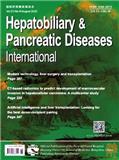
国际肝胆胰疾病杂志(英文版)(Hepatobiliary & Pancreatic Diseases International) 知网万方维普
- CSCD
- 主管单位:
浙江省卫生健康委员会
- 主办单位:
浙江省医学学术交流管理中心、浙江大学医学院附属第一医院、浙江大学出版社有限责任公司
- 国际刊号:
1499-3872;EISSN2352-9377
- 国内刊号:
33-1391/R
- 学科分类:
- 字数:
4000-24000
- 有无基金:
/有基金 100.0%
- 周期:
CN外文-双月刊
- 特殊属性:
第一批认定学术期刊
- 电话:
0571-87236559,87236600(202204期)
- 邮箱:
hbpdint@126.comhbpdje@zju.edu.cn(202204期)
- 复合因子:
1.156
- 综合因子:
0.828
- 收录:
知网,万方,维普
- 级别:
CSCD
- 杂志社官网:
- 投稿网址: https://mc03.manuscriptcentral.com/hbpdint
期刊简介
《国际肝胆胰疾病杂志》期刊已被查看: 次
更新频次
中频栏目:
EDITORIAL-50.0%-期平均发文量1篇
REVIEW ARTICLES-50.0%-期平均发文量2篇
ORIGINAL ARTICLES_Liver-66.7%-期平均发文量4篇
ORIGINAL ARTICLES_Biliary-66.7%-期平均发文量1篇
ORIGINAL ARTICLES_Pancreas-66.7%-期平均发文量1篇
CLINICAL IMAGES-33.3%-期平均发文量3篇
LETTERS TO THE EDITOR-66.7%-期平均发文量5篇
ORIGINAL ARTICLES_Transplantation-50.0%-期平均发文量2篇
低频栏目:
2024年01期其他-16.7%-期平均发文量5篇
VIEWPOINTS-16.7%-期平均发文量4篇
2023年06期其他-16.7%-期平均发文量6篇
Special issue on gut-liver axis-16.7%-期平均发文量6篇
Regular issue_ORIGINAL ARTICLES_Liver-16.7%-期平均发文量4篇
Regular issue_ORIGINAL ARTICLES_Biliary-16.7%-期平均发文量1篇
Regular issue_ORIGINAL ARTICLES_Pancreas-16.7%-期平均发文量1篇
Regular issue_NEW TECHNIQUES-16.7%-期平均发文量5篇
2023年05期其他-16.7%-期平均发文量5篇
2023年04期其他-16.7%-期平均发文量4篇
META-ANALYSIS-16.7%-期平均发文量1篇
VIEWPOINT-16.7%-期平均发文量1篇
LETTER TO THE EDITOR-16.7%-期平均发文量1篇
2023年03期其他-16.7%-期平均发文量5篇
Special issue on clinical and basic research in pancreatic cancer-16.7%-期平均发文量13篇
2023年02期其他-16.7%-期平均发文量4篇
单位占比
其他-100.0%一作占比
/有基金-100.0%投稿指南
1、投稿方式:在线投稿。
2、刊内网址:http://www.hbpdint.com/
https://mc03.manuscriptcentral.com/hbpdint
(投稿系统)
3、出刊日期:双月刊,逢双月15日出版。
2022年9月6日星期二
《国际肝胆胰疾病杂志(英文版)》投稿须知
【2022年04期信息】
Instructions for Authors
General information
Hepatobiliary & Pancreatic Diseases International is a journal published bimonthly in the English language by the First Affiliated Hospital, Zhejiang University School of Medicine, Hangzhou, China. We welcome original research articles, review articles, editorials, and others from any part of the world. Manuscripts are reviewed by members of the international editorial board and our expert peer reviewers, then either accepted for publication or rejected by the chief editor. Manuscripts should be submitted via https://mc03.manuscriptcentral.com/hbpdint.
Most of submissions accepted for publication may undergo revisions recommended by the reviewers, editors or statistical advisers. A decision takes from two weeks to three months, the longer period being due to the multiple reviews needed for articles likely to be accepted. Publication varies from two to six months after final acceptance. Proofs of edited articles and illustrations are sent to the corresponding author for correction and reply to any queries from editors. A sample copy of the journal containing the articles will be forwarded to the corresponding author within a few days of publication.
Online submissions
Original research articles including randomized trials, intervention studies, studies of screening and diagnostic tests, cohort studies, cost-effectiveness analyses and case-control studies should be prepared in accordance with the Uniform Requirements for Manuscripts Submitted to Biomedical Journals (www.icmje.org). Those of randomized controlled trials (RCTs) should follow the CONSORTstatement (www.consort-statement.org). The reporting of other articles should follow the guidelines set by the different initiatives or groups listed in the appendix. The article should be submitted with two separate files, one with detailed information about authors and the title, short running title, source of the work, in addition to the names, address, telephone and fax number or E-mail address for the corresponding author. Another file should show only the title, running title, abstract, main text, tables, figures of the submitted article as well as a list of references, which will be sent to reviewers.
The authors’ names (normally no more than six) and their initials should be in the same form as in their other publications with one major qualification such as MD or PhD, their current appointment and a full postal address. One author should be named for editorial correspondence.
Each submission must be accompanied by a letter of copyright transfer signed by all the authors (see the detailed description in the last section) and other relevant documents including informed consent obtained from research subjects and research approval from the supervising or institutional ethics bodies. Author(s) of each submission should clarify the functions in or contributions to their research and declare, if any, competing interest. A choice of one of the following statements will be requested when a decision has been made to accept the paper:
1. The author or one or more of the authors have received or will receive benefits for personal or professional use from a commercial party related directly or indirectly to the subject of this article.
2. No benefits in any form have been received or will be received from a commercial party related directly or indirectly to the subject of this article.
3. The author or authors do not choose to declare any conflict of interest related directly or indirectly to the subject of this article.
The statements selected by the author or authors will be published with the article. The signature of each author will be required. No article will be published until the completed form has been received at the Hepatobiliary & Pancreatic Diseases International office.
Manuscripts should be prepared with generous margins, and double spacing is essential throughout the text, the references and the captions. Tables, figures, captions and a list of references should appear properly in the text. The style should be simple and direct, free from ambiguity and jargon, and with minimal use of abbreviations.
The title of the paper should be chosen with care: a short one has more impact and may be expanded by a subtitle.
Structured abstract of original articles should include four sections as Background, Methods, Results and Conclusions and have no more than 300 words summarizing the most important points in the article, incorporating key words suitable for electronic retrieval systems. Background: This section should provide a precise statement of the primary focus of the study and the context in which it was carried out. Methods: This section describes how the study was performed, including details of clinical and/or technical procedures. Results: This section describes the salient results of the study. Conclusions: This section covers conclusions and their clinical application or others, while equal emphasis should be given to positive and negative findings of equal scientific merit.
The main text should be divided under headings. For many research papers the best sequence is Introduction, Methods (Materials or Patients), Results, and Discussion. The text should comment on, but should not repeat, the details given in tables, figures or captions. Any acknowledgements should be made at the end of the main text.
Introduction: This should explain the problem which is to be addressed, with a definition of the hypothesis to be examined if appropriate, out-lining, briefly, its relevance to the appropriate literature.
Methods (Materials or Patients): The subjects of the study and the methods employed in the investigation must be clearly described. For example, the reasons for examining the particular group of patients should be made clear, and reasons for exclusion of individuals from the study must be stated. Any group used as controls must be defined accurately.
Ethical approval of studies and informed consent are required. For all manuscripts reporting data from studies involving human participants or animals, formal reviewand approval, or formal review and waiver, by an appropriate institutional review board or ethics committee is required and should be described in the Methods section. For those investigators who do not have formal ethics review committees, the principles outlined in the Declaration of Helsinki should be followed. For investigations of humans, state in the Methods section the manner in which informed consent was obtained from the study participants (i.e., oral or written). Editors may request that authors provide documentation of the formal review and recommendation from the institutional review board or ethics committee responsible for oversight of the study.
Results: These must be clearly expressed in simple language. Tables or similar diagrams can be used but must not duplicate material already described in the text.
Discussion: This section must be succinct, pointing out the relevance of the work described in the article and its contribution to current knowledge. The results must be interpreted clearly, and both strength and weakness expressed. Discussion of pertinent references must be concise and short.
Each of the tables should have a short descriptive heading.
The references in the text should include only those that are important and have been studied fully by the authors. The authors are responsible for the accuracy and completeness of the cited references and for correct citation of the text. When listing references the names of journals should be abbreviated according to Index Medicus (List all authors and/or editors up to 6; if more than 6, list the first 6 and et al). All references will be checked deliberately by the authors; PMID roots in the abstract serial number indexed by PubMed (http://www.ncbi.nlm.nih.gov/sites/entrez?db=PubMed) and doi are requested.
The references cited should be represented in the text by numbers within square brackets in the order of their appearance. The list of references at the end of the text should be in this numerical order with details and punctuation as follows:
Article from journal—more than one author
Cen C, Fang HX, Yu SF, Liu JM, Liu YX, Zhou L, et al. Association between ADIPOQ gene polymorphisms and the risk of new-onset diabetes mellitus after liver transplantation. Hepatobiliary Pancreat Dis Int 2017;16:602-609. PMID: 29291779 doi: 10.1016/S1499-3872(17)60069-9.
Article from journals with English abstracts only
Sun JH, Zhang YL, Nie CH, Li J, Zhou TY, Zhou GH, et al. Effect of liver cirrhosis on percutaneous selective portal vein embolization for primary liver cancer [Article in Chinese]. Zhonghua Yi Xue Za Zhi 2013;93:3831-3834. PMID: 24548443 doi: 10.3760/cma.j.issn.0376-2491.2013.48.006.
Monographic series
Davidoff RA. Migraine: manifestations, pathogenesis, and management. Philadelphia, Pa: FA Davis; 1995. Contemporary Neurology Series, No. 42.
Online journals with volume and page information
Simon JA, Hudes ES. Relationship of ascorbic acid to blood lead levels. JAMA 1999;281:2289-2293. PMID: 10386552. Accessed June 11, 2009. http://jama.ama-assn.org/cgi/content/full/281/24/2289
Online journals without volume and page information
Li JH, Jia JJ, Shen W, Chen SS, Jiang L, Xie HY, et al. Optimized postconditioning algorithm protects liver graft after liver transplantation in rats. Hepatobiliary Pancreat Dis Int 2018 Feb 2. PMID: 29428101 doi: 10.1016/j.hbpd.2018.01.006.
Online website
Morse SS. Factors in the emergence of infectious diseases. Emerg Infect Dis [serial online] 1995 Jan-Mar [cited 1996 Jun 5]; 1(1): [24 screens]. Available from: www.cdc.gov/ncidod/eid/vol1no1/morse.htm
Book—more than one author (list all authors if six or less, otherwise list first three followed by et al)
Baselt RC, Cravey RH. Disposition of toxic drugs and chemicals in man, 4th ed. Foster City, CA: Chemical Toxicology Institute;1995.
Chapter from a book
Calne RY. Experimental background. In: Calne RY, ed. Liver transplantation, 2nd ed. London: Grune & stratton; 1987:3-7.
Book—with editors
Maddrey WC, ed. Transplantation of the liver. New York: Elsevier Science Publishing;1998.
Illustrations Photographs, drawings, diagrams, charts and graphs should meet the editorial demands. The “three-dimensional” bar charts produced by computer programs are not acceptable. Photomicrographs with no inset scale should have the magnification of the print in the caption; stains should be indicated. The lettering on diagrams and graphs should be large enough to be clear after it has been reduced for printing and be consistent in size and style. Color will be accepted only where it is essential. Permission to reproduce any borrowed illustration must be obtained from the author and the publisher, and evidence of this permission must accompany the submitted article.
Review articles are welcome especially systematic, critical assessments of the literature and data sources pertaining to clinical topics, emphasizing factors such as cause, diagnosis, prognosis, therapy, or prevention. All articles and data sources reviewed should include information about the specific type of study or analysis, population, intervention, exposure, and tests or outcomes. All articles or data sources should be selected systematically for inclusion in the review and critically evaluated, and the selection process should be described in the article. Meta-analyses also will be considered as review articles. Editors ask potential authors of review articles to check the MOOSE initiative formeta-analysis of observational studies in epidemiology (See the appendix).
The articles in department of New techniques focus on the new techniques used, which are of interest to clinicians and researchers.
Clinical images, clear and interesting, are submitted with descriptive paragraph of 500-800 words. Authors must obtain signed informed consent from the patient.
Viewpoints may address virtually any important topic in the fields of hepatobiliary and pancreatic diseases, medical, surgical, radiological, pathological, biochemical, physiological and histological aspects, and generally are not linked to a specific article. It can be up to 1500 words, two tables or figures, no more than 10 references and 6 authors.
Letters to the editor on matters of recently published articles in the journal are especially welcome, which should not exceed 400 words. Letters of general interest, unlinked to items published in the journal, can be up to 1500 words long and are to be sent for peer-reviewed. Correspondence letters are not usually peer reviewed, but the journal might invite replies from the authors of the original publication, or pass on letters to these authors. Only two tables or figures are permitted, and there should be no more than 10 references and six authors. All accepted letters are edited, and proofswill be sent out to authors before publication.
Appendix. Reporting guidelines for study designs
Study designs
Randomized controlled trial (RCT)–superiority design
CONSORT statement
(Begg C, et al. JAMA 1996;276:637-639.)
http://jama.ama-assn.org/cgi/content/summary/276/8/637
RCT with non-inferiority/equivalence design
Modified CONSORT statement
(Piaggio G, et al. JAMA 2006;295:1152-1160.)
http://jama.ama-assn.org/cgi/content/full/295/10/1152
Systematic review of therapeutic interventions
QUOROM statement
(Moher D, et al. Lancet 1999;354:1896-1900.)
http://www.thelancet.com/journals/lancet/article/
PIIS0140-6736(99)04149-5/fulltext
Diagnostic test performance study
STARD statement
(Bossuyt PM, et al. Clin Chem 2003;49:1-6.)
http://www.clinchem.org/cgi/content/full/49/1/1
Systematic review of diagnostic tests
QUADAS statement
(BMC Med Res Method 2006;6(9). doi: 10.1186/1471-2288-6-9.)
http://www.biomedcentral.com/1471-2288/6/9
Systematic review of observational study
MOOSE statement
(Stroup DF, et al. JAMA 2000;283:2008-2012.)
http://jama.ama-assn.org/cgi/content/full/283/15/2008
Economic evaluations
CHEC criteria
(Evers S, et al. Int J Tech Assess Health Care 2005;21:240-245.)
http://journals.cambridge.org/action/displayAbstract?
fromPage=online&aid=292673
Notes, news or announcements for conferences, symposia or meetings may be sent for publication at least 3 months before the required date of publication. These are mostly included under Meetings and Courses without payment. Provide title, date(s) and place of the event and contact address, telephone, and E-mail address. Hepatobiliary & Pancreatic Diseases International reserves the right to be selective in publishing these announcements. Those wishing for a detailed publication may submit as advertisements. For academic information, subsidized rates are available.
Letter of copyright transfer
We require a letter of copyright transfer signed by all named authors, stating that they have taken a significant and active part in the preparation of the article, that they have read and approved the final version, and are willing to discuss it in detail. This is essential for the reviewing process to be completed. Possibly duplicative materials (i.e., those containing substantially similar content or using the same or similar data) that have been previously published or are being considered elsewhere must be provided at the time of manuscript submission.
To conform with the Copyright Act of China, this letter must contain the following paragraph:
In consideration of Hepatobiliary & Pancreatic Diseases International reviewing and editing my (our) submission, the author(s) undersigned hereby transfer(s), assign(s), or otherwise conveys all copyright ownership to Hepatobiliary & Pancreatic Diseases International represent(s) that he (they) own(s) all rights in the material submitted. The author(s) further confirm(s) that the article is original, that it is not under consideration by another journal in any language, and that it has not been previously published, in whole or in part, in another journal in any language. There is no conflict of interests relevant to the study reported in this article.
For convenience potential author can download the form of the letter from our journal’s website. This assignment is to take effect only if the work is accepted for publication in Hepatobiliary & Pancreatic Diseases International.
These instructions can also be found on the journal’s website at www.hbpdint.com and may be copied by those intending to submit an article.
Letter of Copyright Transfer
Your name (printed)
Tel Fax
Corresponding author
Manuscript entitled:
We have taken a significant and active part in the preparation of the article, and we have read and approved the final version.
We are willing to discuss it in detail.
In consideration of Hepatobiliary & Pancreatic Diseases International reviewing and editing my(our) submission, the author(s) undersigned hereby transfer(s), assign(s), or otherwise conveys all copyright ownership to Hepatobiliary & Pancreatic Diseases International represent(s) that he(they) own(s) all rights in the material submitted. The author(s) further confirm(s) that the article is original, that it is not under consideration by another journal in any language, and that it has not been previously published, in whole or in part, in another journal in any language. There is no conflict of interests relevant to the study reported in this article.
This assignment is to take effect only if thework is accepted for publication in Hepatobiliary & Pancreatic Diseases International.
Authors’ name(s) in order of appearance in the manuscript, signatures (date):
1. Full name (printed):
Abbreviated name in PubMed (printed):
Signed (handwritten):
Date:
2. Full name (printed):
Abbreviated name in PubMed (printed):
Signed (handwritten):
Date:
上一篇:WTO与中国(英文版)(Journal of WTO and China)(或:《世界贸易组织与中国》)下一篇:中国高等学校学术文摘·哲学(英文版)(Frontiers of Philosophy in China-Selected Publications from Chinese Univ
《国际肝胆胰疾病杂志》同类内科学期刊
-
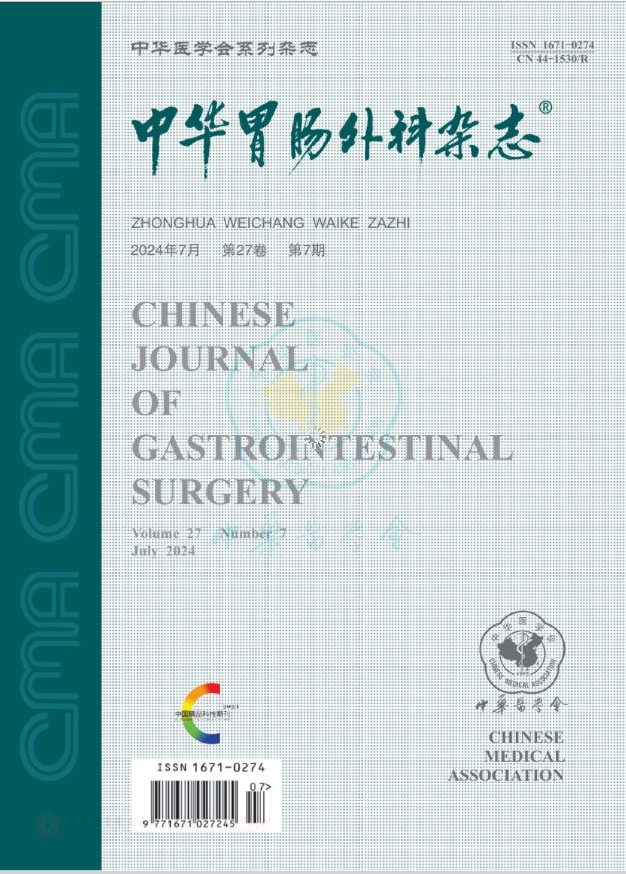
中华胃肠外科杂志(原:中国胃肠外科杂志)
北核,CSCD,科核,武A,高T2
CN中文-月刊影响因子1.903
-
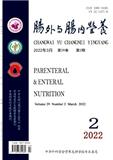
肠外与肠内营养
北核,CSCD,科核,武A+,高T3
CN中文-双月刊影响因子1.694
-
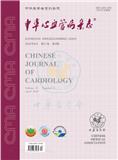
中华心血管病杂志
北核,CSCD,科核,武A+,高T1
CN中文-月刊影响因子2.576
-

中国糖尿病杂志
北核,CSCD,科核,武A
CN中文-月刊影响因子1.554
-
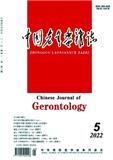
中国老年学杂志
北核,武A+
CN中文-半月刊影响因子1.791
-
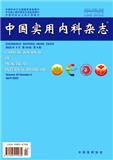
中国实用内科杂志
北核,CSCD,科核,武A
CN中文-月刊影响因子1.51
-
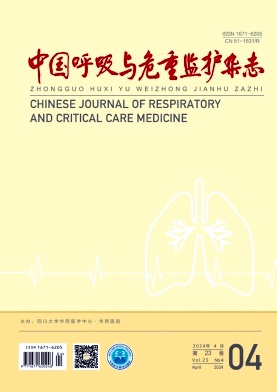
中国呼吸与危重监护杂志
CSCD,科核,武A-,高T3
CN中文-月刊影响因子1.753
-
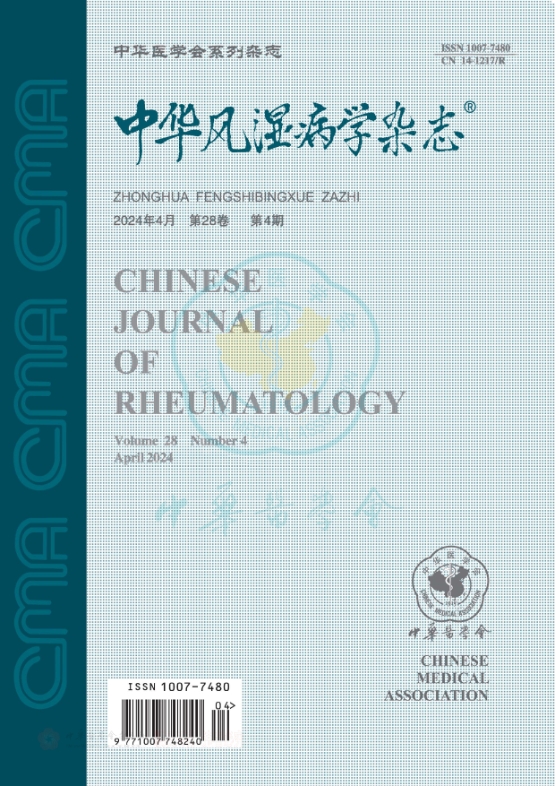
中华风湿病学杂志
科核,CSCD扩,武B+
CN中文-月刊影响因子0.744
常见问题
-
国际肝胆胰疾病杂志杂志社官网、联系方式是什么?
国际肝胆胰疾病杂志 投稿网址:https://mc03.manuscriptcentral.com/hbpdint联系电话:0571-87236559,87236600(202204期)
投稿邮箱:hbpdint@126.comhbpdje@zju.edu.cn(202204期) -
国际肝胆胰疾病杂志杂志是核心期刊么?
国际肝胆胰疾病杂志是核心期刊,级别是:CSCD, 是:内科学分类下的知网,万方,维普收录的期刊。
-
请问你们是国际肝胆胰疾病杂志杂志社吗?
我们不是《国际肝胆胰疾病杂志》杂志社。本站主要从事期刊信息展示与期刊推荐,不是任何杂志官网,直投稿件请联系杂志社。本站仅提供免费的学术指导、论文辅导、期刊投稿信息整理收集服务。
-
你们指导服务后可以保证文章被发表吗?
期刊发表的成功与否,主要取决于文章内容的质量。编辑老师会根据研究领域、创新性等多因素进行考量。我们会帮助您理解期刊的发表要求,助力提升发表几率,从而增加发表的机会。
-
晋级论文能否在报纸上发表?
在学术界,论文的发表往往被视为研究者职业发展的重要一环。晋级论文,即为了获得更高职称或学术地位而撰写的学术论文,通常需在专业期刊上发表。然而,许多人可能会问
